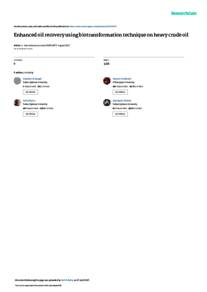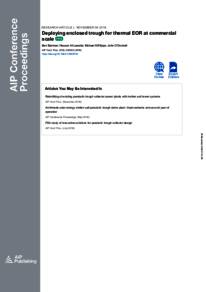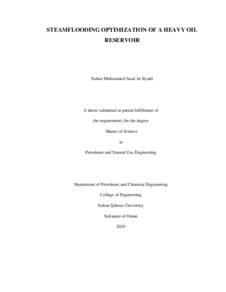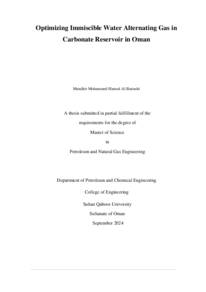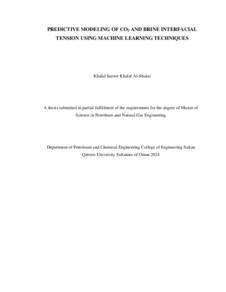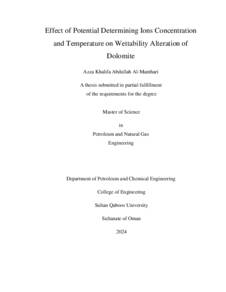Document
The potential of indigenous paenibacillus ehimensis BS1 for recovering heavy crude oil by biotransformation to light fractions.
Identifier
DOI: 10.1371/journal.pone.0171432
Source
PLoS ONE. v. 12, 2, e0171432 [1-18].
Contributors
Al-Bahry, Saif N. , Author
Al-Wahaibi, Yahya M. , Author
Elshafie, Abdulkadir E., Author
Al-Bemani, Ali S., Author
Joshi, Sanket J., Author
Country
United States.
Publisher
Public Library of Science.
Gregorian
2017-02-01
Language
English
Subject
English abstract
Microbial Enhanced Oil Recovery (MEOR) is a potential technology for residual heavy oil recovery. Many heavy oil fields in Oman and elsewhere have difficulty in crude oil recovery because it is expensive due to its high viscosity. Indigenous microbes are capable of improving the fluidity of heavy oil, by changing its high viscosity and producing lighter oil fractions. Many sporeforming bacteria were isolated from soil samples collected from oil fields in Oman. Among the isolates, an autochthonous spore-forming bacterium was found to enhance heavy oil recovery, which was identified by 16S rDNA sequencing as Paenibacillus ehimensis BS1. The isolate showed maximum growth at high heavy oil concentrations within four days of incubation. Biotransformation of heavy crude oil to light aliphatic and aromatic compounds and its potential in EOR was analyzed under aerobic and anaerobic reservoir conditions. The isolates were grown aerobically in Bushnell-Haas medium with 1% (w/v) heavy crude oil. The crude oil analyzed by GC-MS showed a significant biotransformation from the ninth day of incubation under aerobic conditions. The total biotransformation of heavy crude oil was 67.1% with 45.9% in aliphatic and 85.3% in aromatic fractions. Core flooding experiments were carried out by injecting the isolates in brine supplemented with Bushnell-Haas medium into Berea sandstone cores and were incubated for twelve days under oil reservoir conditions (50?C). The extra recovered oil was analyzed by GC-MS. The residual oil recovered from core flood experiments ranged between 10-13% compared to the control experiment. The GC-MS analyses of the extra recovered oil showed 38.99% biotransformation of heavy to light oil. The results also indicated the presence of 22.9% extra aliphatic compounds in the residual crude oil recovered compared to that of a control. The most abundant compound in the extra recovered crude oil was identified as 1-bromoeicosane. The investigations showed the potential of P. ehimensis BS1 in MEOR technology by the biotransformation of heavy to lighter crude oil under aerobic and reservoir conditions. Heavy oil recovery and biotransformation to lighter components are of great economic value and a few studies have been done.
ISSN
1932-6203
Category
Journal articles

